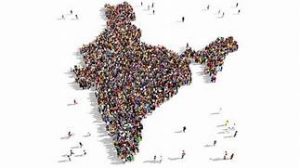World Population Prospects 2022:

According to the 2022 edition of the United Nations’ World Population Prospects (WPP), India is projected to surpass China as the world’s most populous country in 2023.
- The Population Division of the UN has been publishing the WPP in a biennial cycle since 1951.
- Each revision of the WPP provides a historical time series of population indicators starting in 1950.
- It does so by taking into account newly released national data to revise estimates of past trends in fertility, mortality or international migration.
Findings of the Report:
- The global population is expected to grow to around 8.5 billion in 2030, 9.7 billion in 2050 and 10.4 billion in 2100.
- In 2020, the global growth rate fell under 1% per year for the first time since 1950.
- More than half of the projected increase in global population up to 2050 will be concentrated in just eight countries:
- The Democratic Republic of the Congo, Egypt, Ethiopia, India, Nigeria, Pakistan, the Philippines and the United Republic of Tanzania.
- The 46 Least Developed Countries (LDCs) are among the world’s fastest-growing.
- Many are projected to double in population between 2022 and 2050, putting additional pressure on resources and posing challenges to the achievement of the UN’s Sustainable Development Goals (SDGs).
- The share of the global population aged 65 years or above is projected to rise from 10% in 2022 to 16% in 2050.
- A sustained drop in fertility has led to an increased concentration of the population at working ages (between 25 and 64 years), creating an opportunity for accelerated economic growth per capita.
- This shift in the age distribution provides a time-bound opportunity for accelerated economic growth.
- International migration is having an important impact on population trends for some countries.
- For high-income countries between 2000 and 2020, the contribution of international migration to population growth exceeded the balance of births over deaths.
- Over the next few decades, migration will be the sole driver of population growth in high-income countries.
- India’s growth rate stood at 2.3 % in 1972, which has dropped down to less than 1% now.
- In this period, the number of children each Indian woman has during her lifetime has come down from about 5.4 to less than 2.1 now.
- This means that Indian has attained the Replacement Fertility Rate, at which a population exactly replaces itself from one generation to the next.
- Fertility rates have been declining, so have mortality rates with increased access to healthcare and advances in medicine.
- Population of 0-14 years and 15-24 years will continue to decline while those of 25-64 and 65+ will continue to rise for the coming decades.
- This reduction of premature mortality for successive generations, reflected in increased levels of life expectancy at birth, has been a driver of population growth in India.




